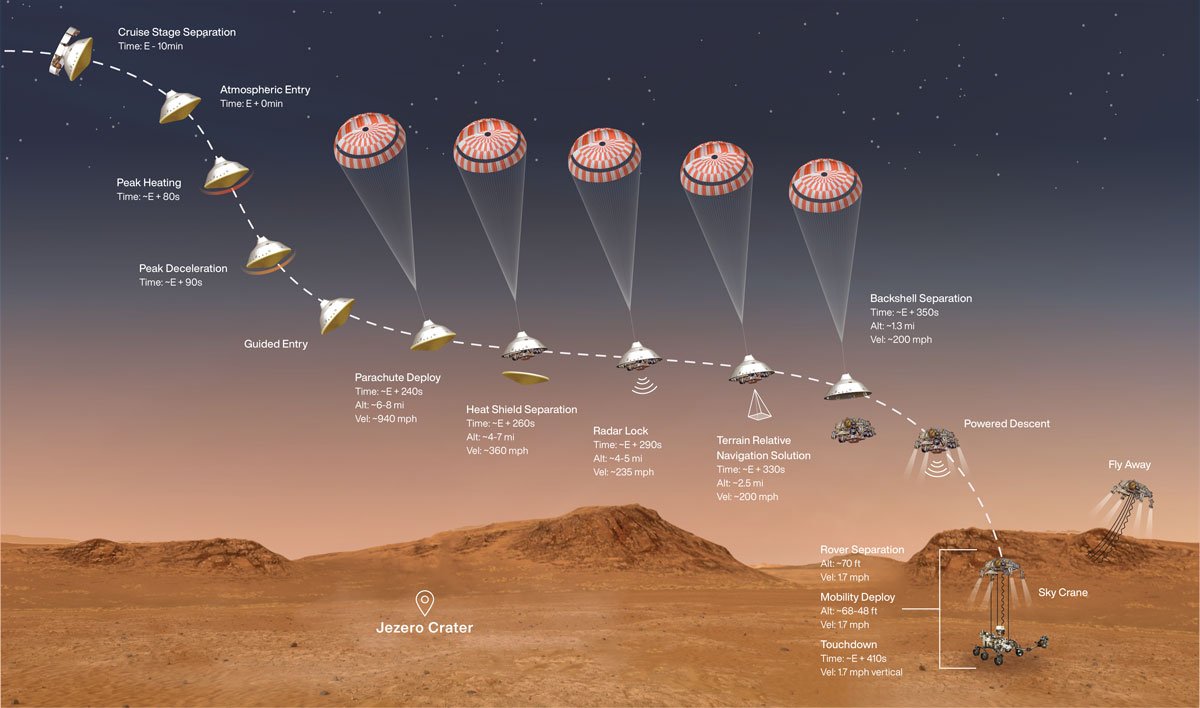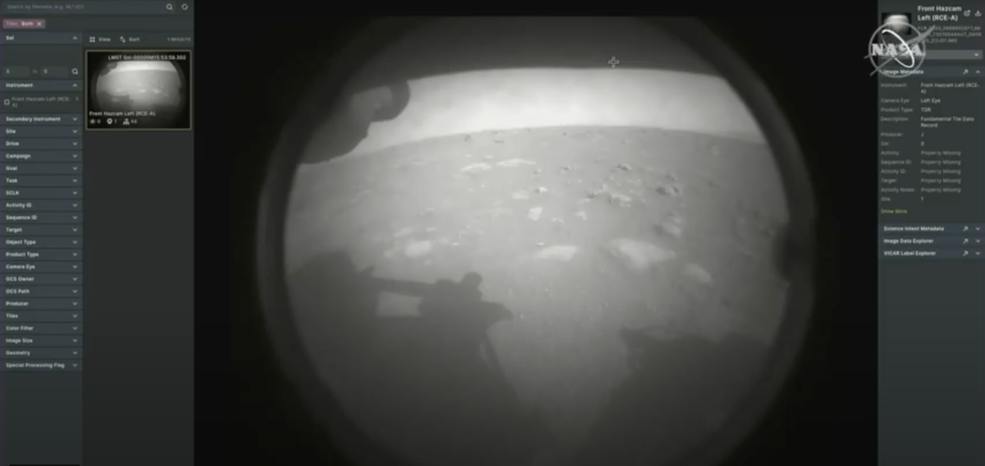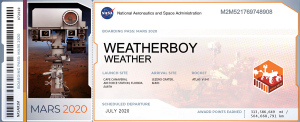
NASA’s Perseverance rover successfully landed on Mars and sent back its first image today. Engineers at mission control at NASA’s Jet Propulsion Laboratory confirmed that the rover, with the Ingenuity Mars Helicopter attached to its belly, touched down safely on Mars around the Jezero Crater.
The Mars Perseverance rover mission is part of NASA’s Mars Exploration Program, a long-term effort of robotic exploration of the Red Planet ahead of eventual crewed human flight missions to Mars. This specific Mars Perseverance mission addresses high-priority science goals for Mars exploration, including key questions about the potential for life on Mars. The mission takes the next step by not only seeking signs of habitable conditions on Mars in the ancient past, but also searching for signs of past microbial life itself. The Mars Perseverance rover introduces a drill that can collect core samples of the most promising rocks and soils and set them aside in a “cache” on the surface of Mars.
NASA says this mission also provides opportunities to gather knowledge and demonstrate technologies that address the challenges of future human expeditions to Mars. These include testing a method for producing oxygen from the Martian atmosphere, identifying other resources, such as subsurface water, improving landing techniques, and characterizing weather, dust, and other potential environmental conditions that could affect future astronauts living and working on Mars.
“This landing is one of those pivotal moments for NASA, the United States, and space exploration globally – when we know we are on the cusp of discovery and sharpening our pencils, so to speak, to rewrite the textbooks,” said acting NASA Administrator Steve Jurczyk. “The Mars 2020 Perseverance mission embodies our nation’s spirit of persevering even in the most challenging of situations, inspiring, and advancing science and exploration. The mission itself personifies the human ideal of persevering toward the future and will help us prepare for human exploration of the Red Planet in the 2030s.”

About the size of a car, the 2,263-pound rover will undergo several weeks of testing before it begins its two-year science investigation of Mars. Scientists will confirm that all of the technology on-board survived the long journey from Earth. The Mars Rover was launched on July 30, 2020 from Cape Canaveral Space Force Station in Florida; the journey to today’s landing took 203 days to make the 293 million mile journey.

Prior to launch, NASA issued online “Boarding Passes” to people interested in the mission. This special project gave people the chance to have their name stenciled on a computer chip that was launched with the rover. As a “receipt” for getting your name into space, NASA produced souvenir boarding passes for people online. While you won’t get airline frequent flier miles for the multi-million mile journey, you’ll have proof that your name landed on the red planet.
“Landing on Mars is always an incredibly difficult task and we are proud to continue building on our past success,” said JPL Director Michael Watkins. “But, while Perseverance advances that success, this rover is also blazing its own path and daring new challenges in the surface mission. We built the rover not just to land but to find and collect the best scientific samples for return to Earth, and its incredibly complex sampling system and autonomy not only enable that mission, they set the stage for future robotic and crewed missions.”
Now on the ground, Perseverance beamed its first view from the Mars surface to Earth. The image came from Perseverance’s Hazard Avoidance Cameras, which help with driving. The clear protective covers over these cameras are still on so the images aren’t yet clear and in color.